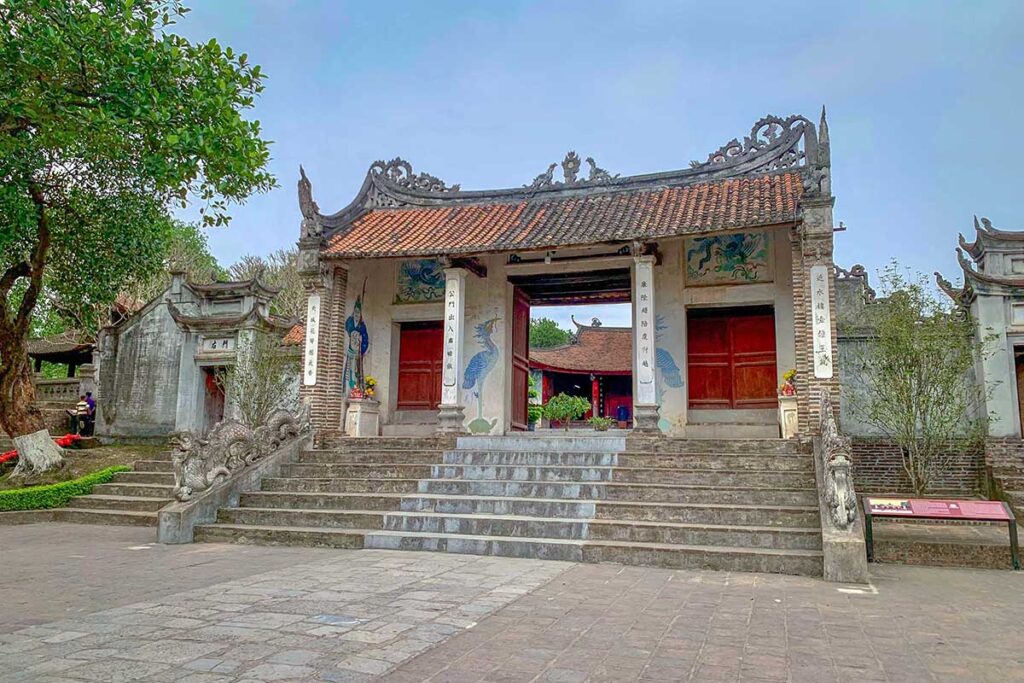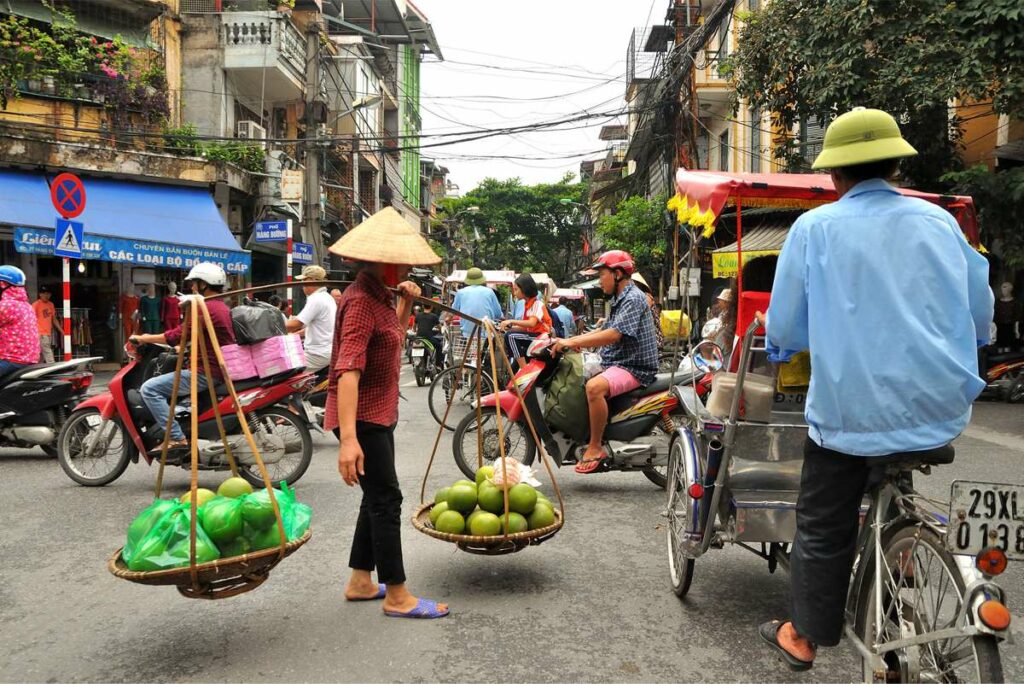What is o Loa Citadel?
Co Loa Citadel is a large historical site and former capital of ancient Vietnam, located just outside Hanoi in Dong Anh District. Built with impressive earth ramparts and surrounded by moats, it once served as a major political and military center. Today, it’s a quiet place to explore temples, legends, and remnants of early Vietnamese civilization in a rural village setting.
History of Co Loa Citadel
Co Loa Citadel holds a special place in Vietnamese history as the country’s first capital and one of its most legendary archaeological sites. Its story spans more than two thousand years, from ancient kingdoms and Chinese rule to its quiet role in modern times.
Foundation and the Âu Lac Kingdom (3rd century BCE)
Co Loa was established in the 3rd century BCE by King An Duong Vuong after he unified the Âu Việt and Lạc Việt tribes and defeated the last Hung King. He chose this location as the capital of his new kingdom, Âu Lạc, and ordered the construction of a spiral-shaped citadel with multiple layers of ramparts and moats for defense.
According to legend, the king’s efforts to build the fortress were mysteriously undone each night. In a dream, he was visited by a golden turtle spirit, who revealed that the land was sacred and offered him a magical claw to use as a trigger for a crossbow. With this divine crossbow, said to fire thousands of arrows at once, Co Loa became an almost invincible stronghold. However, tragedy followed: An Duong Vuong’s daughter, My Chau, married the son of his rival, who betrayed the kingdom by stealing the magic trigger. The loss of the crossbow’s power led to Co Loa’s downfall, and the king is said to have killed his daughter before taking his own life.
Chinese domination and Ngo Quyen Era
After the fall of Âu Lạc, Co Loa lost its status as the capital but remained an important administrative and strategic site under centuries of Chinese domination. The citadel and its surroundings continued to be inhabited, and traces of Dong Son and Han-era culture have been found in archaeological digs.
In the 10th century, following his victory at the Battle of Bạch Đằng River in 938 CE, Vietnamese leader Ngô Quyền declared independence from China. He briefly chose Co Loa as the capital of his newly independent state, restoring some of its former prominence. However, the capital was soon moved again, and Co Loa gradually faded from the political spotlight.
Later periods and decline
In the centuries that followed, Co Loa transitioned into a rural village landscape. While no longer a center of power, its spiritual and symbolic importance endured. During the French colonial period and later in the resistance wars against both the French and the Americans, the area remained active in supporting the national cause, though not a primary battleground.
In 1962, Co Loa was officially recognized by the Vietnamese government as a national historical and cultural relic. Ongoing archaeological research and preservation efforts have helped highlight its significance as both a legendary site and a valuable window into Vietnam’s early civilization.
Layout of the Ancient Citadel
Co Loa Citadel was designed in a spiral shape, with concentric earthen walls and moats that made it one of the most complex military structures in ancient Southeast Asia. Legend says it once had nine layers of ramparts, though today only three main sections remain: the outer, middle, and inner walls. While much of the original structure has been altered by time and modern development, visitors can still see large sections of the old ramparts, especially near the inner citadel and along village paths.
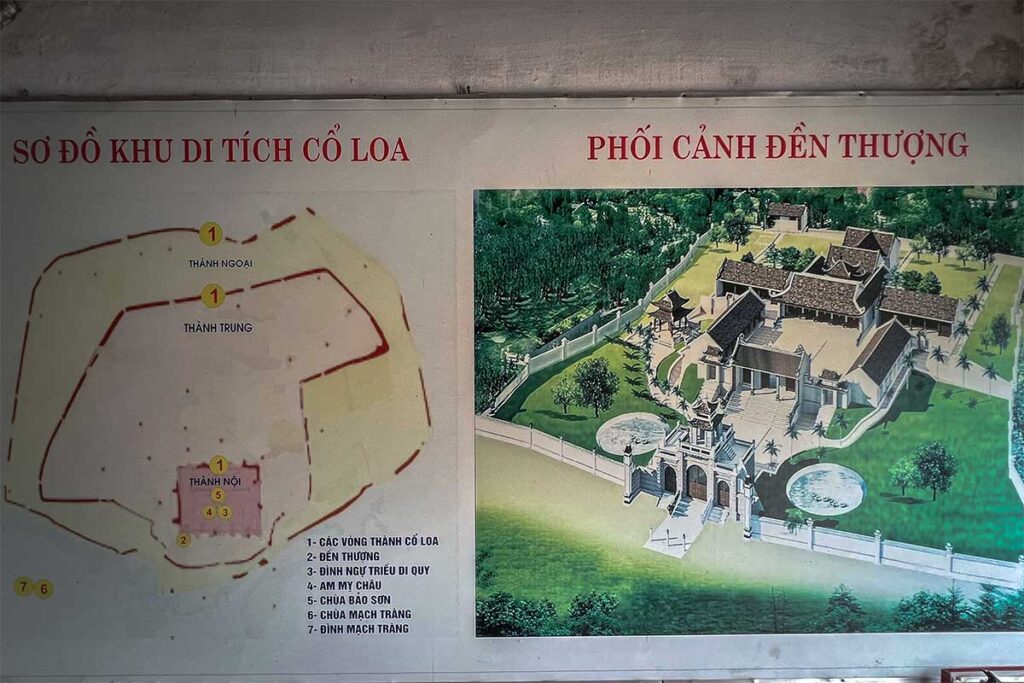
The layout also included an interconnected system of waterways linked to the Hoang River. These moats acted as both a defensive barrier and a transport network, showing how strategic the design was even over 2,000 years ago.
Outer walls
The outer walls once stretched for around 8 kilometers, forming the first line of defense. Built by excavating soil to form moats and piling it into massive ramparts, these walls were about 3 to 8 meters high and up to 30 meters thick at the base. Some sections are still visible, running alongside village roads and rice paddies. Their scale gives a sense of the massive effort it took to construct the citadel using only human labor and simple tools.
Middle walls
Inside the outer layer lies the middle wall, shaped irregularly with a perimeter of about 6.5 kilometers. Though less well-preserved than the outer wall, some portions can still be traced along rural paths. Historically, this wall had multiple gates and was surrounded by moats connected to nearby streams and lakes, creating a flexible system for both land and water defense. One of its eastern gates linked directly to the Hoang River.
Inner Citadel
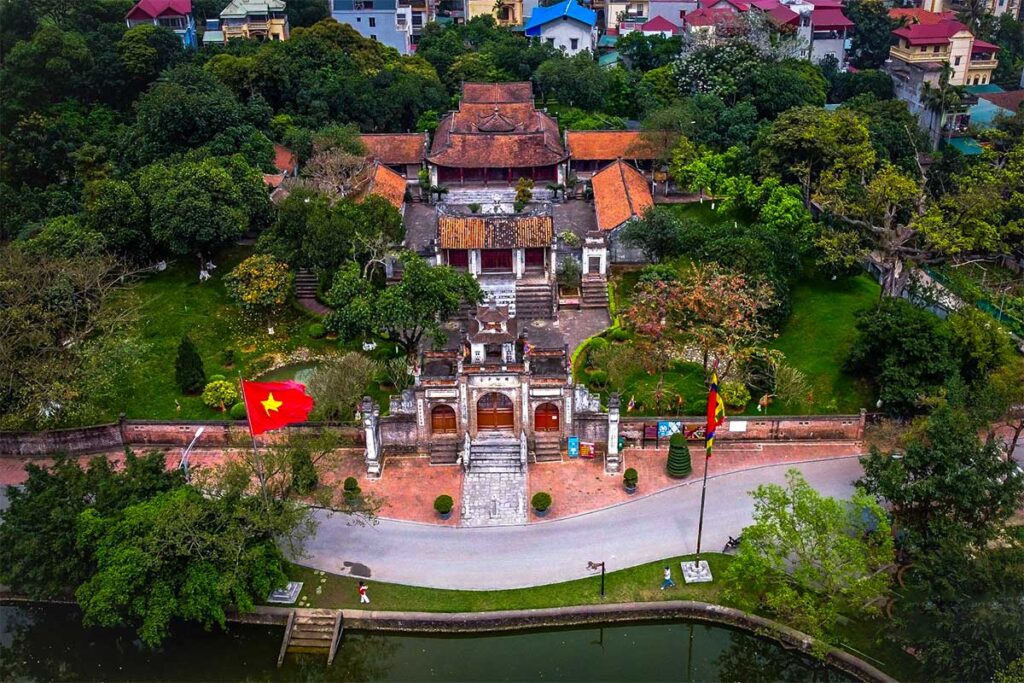
The inner citadel is rectangular, with a perimeter of about 1.7 kilometers. This area was once the royal compound and court of King An Duong Vuong. Today, it’s where you’ll find the most concentrated set of historical and cultural sites—such as temples, shrines, and the Co Loa Museum. The layout is still clear, with wide earthen embankments and a surrounding moat. This section gives visitors the best chance to imagine what the ancient capital might have looked like at its peak.
What to see at Co Loa Today
Although much of the original citadel no longer exists, there’s still a variety of historical and cultural landmarks to explore. The site is spread across two main areas: the inner citadel zone, which contains the most iconic monuments and temples, and a second cluster further into the village, accessible on foot. Walking between these areas also gives you a feel for the rural life and traditional homes of Co Loa today.
Area 1: Inner Citadel Zone (main entrance area)
1. Middle Rampart (Thành Trung)
As you approach the site, you’ll pass part of the Middle Rampart, one of the concentric earthen walls that once surrounded the citadel. Built over 2,000 years ago, these ramparts are among the largest prehistoric fortifications in Southeast Asia. The visible sections give a real sense of the citadel’s former scale and defensive purpose.
2. Pearl Well (Trong Thuy’s Well)
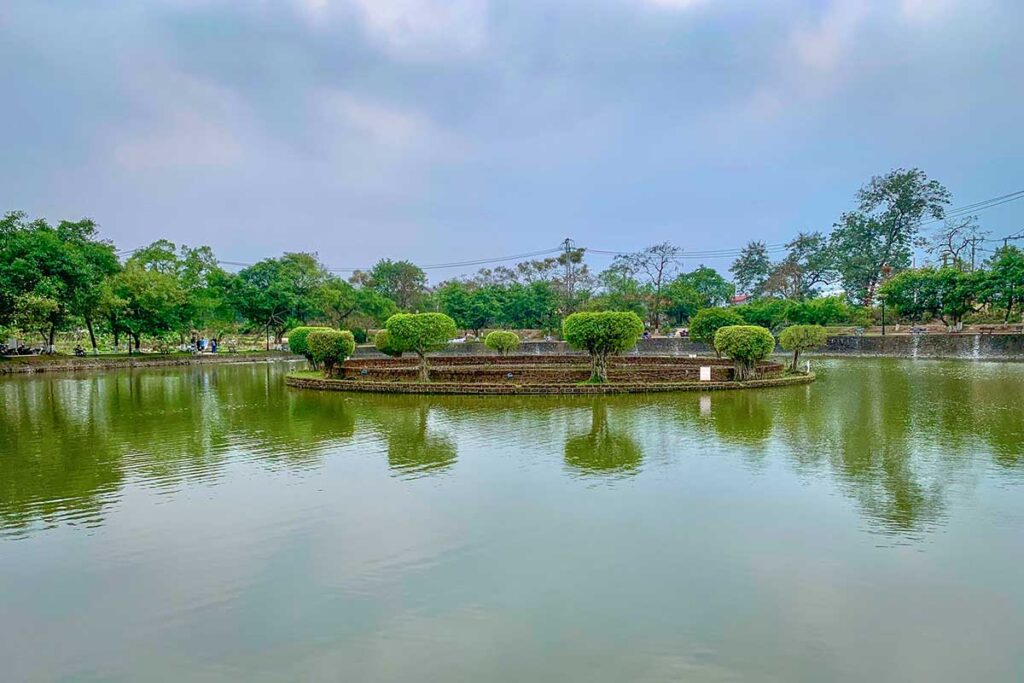
In front of the temple gates sits a large pond, and at its center is a circular stone structure known as Pearl Well or Trong Thuy’s Well. According to legend, this is where Trong Thuy—husband of Princess My Chau—drowned himself after betraying the kingdom. The well is not small or tucked away, but an open, ceremonial feature visible from the path. It’s one of the most symbolic places at Co Loa, even if understated in appearance.
3. Outer and Inner Gates
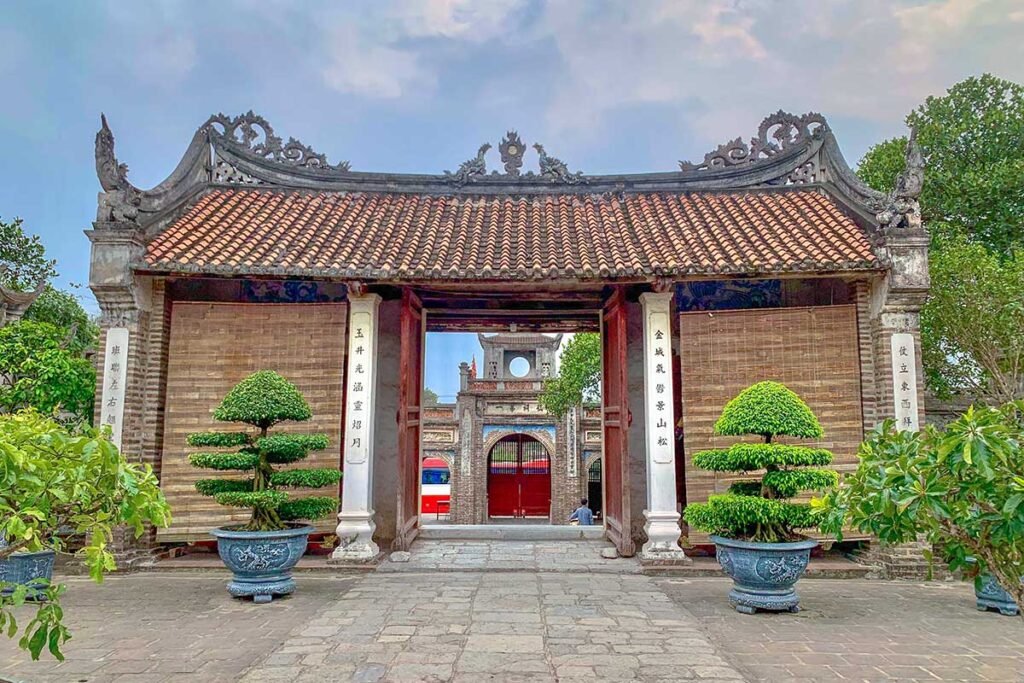
Before reaching the temple complex, you’ll pass through two large stone gateways. These gates were built as ceremonial entrances and mark the transition from the village path into the spiritual core of Co Loa. They are among the most photogenic parts of the site and reflect the layered design of the ancient city.
4. An Duong Vuong Temple (Thuong Temple)
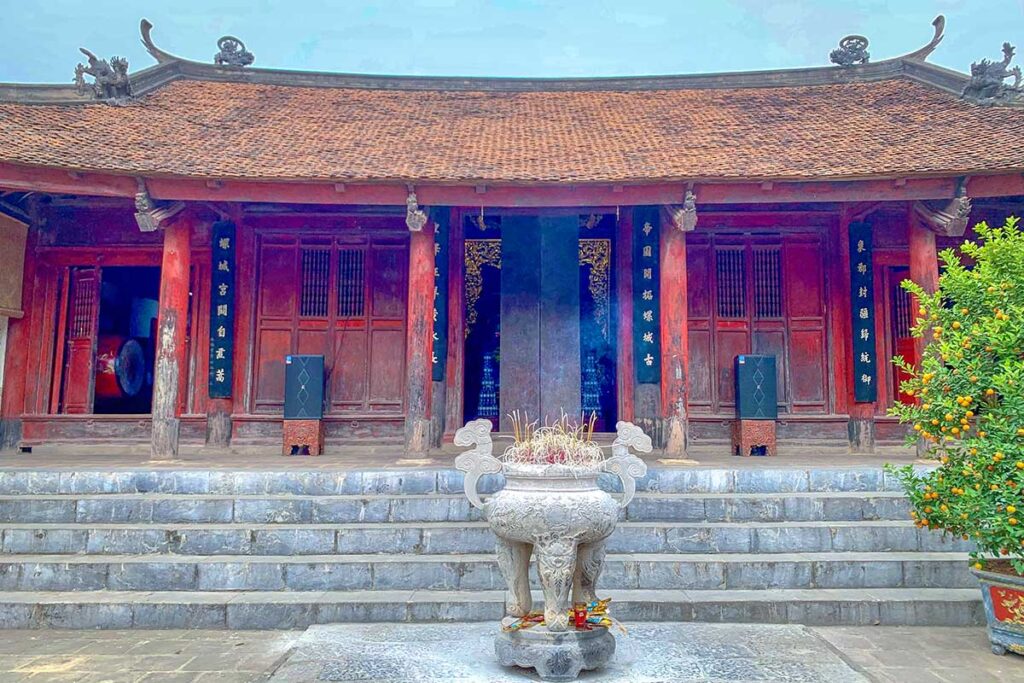
This is the main temple at Co Loa, dedicated to King An Duong Vuong, who ruled the Âu Lạc Kingdom. Built in the 17th century on the site of the ancient palace, the temple features traditional Vietnamese architecture with carved wooden beams and tiled roofs.
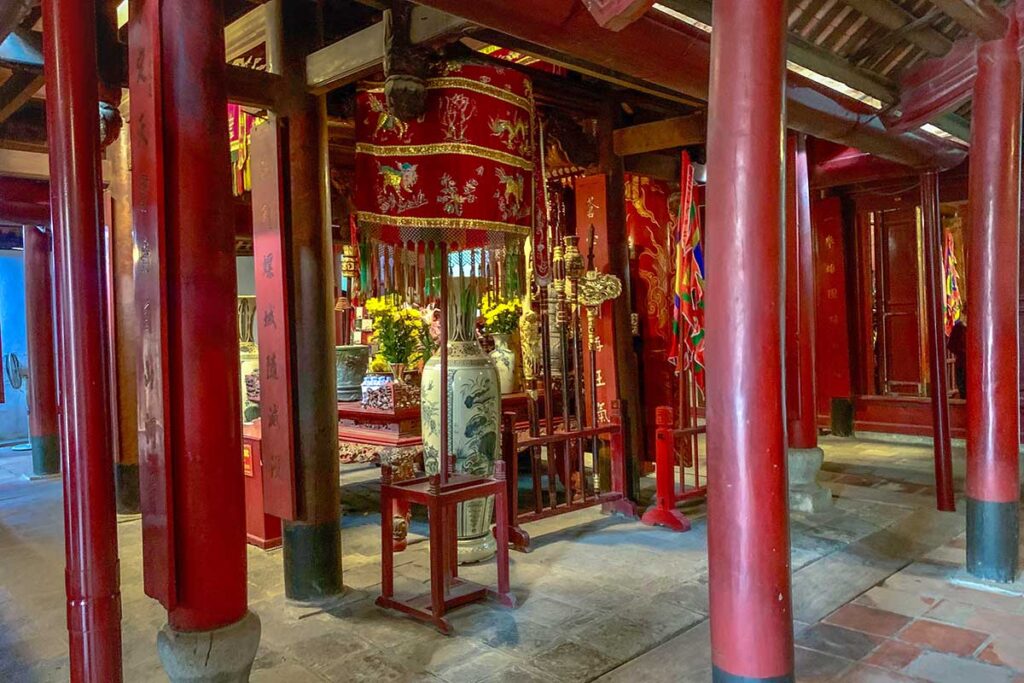
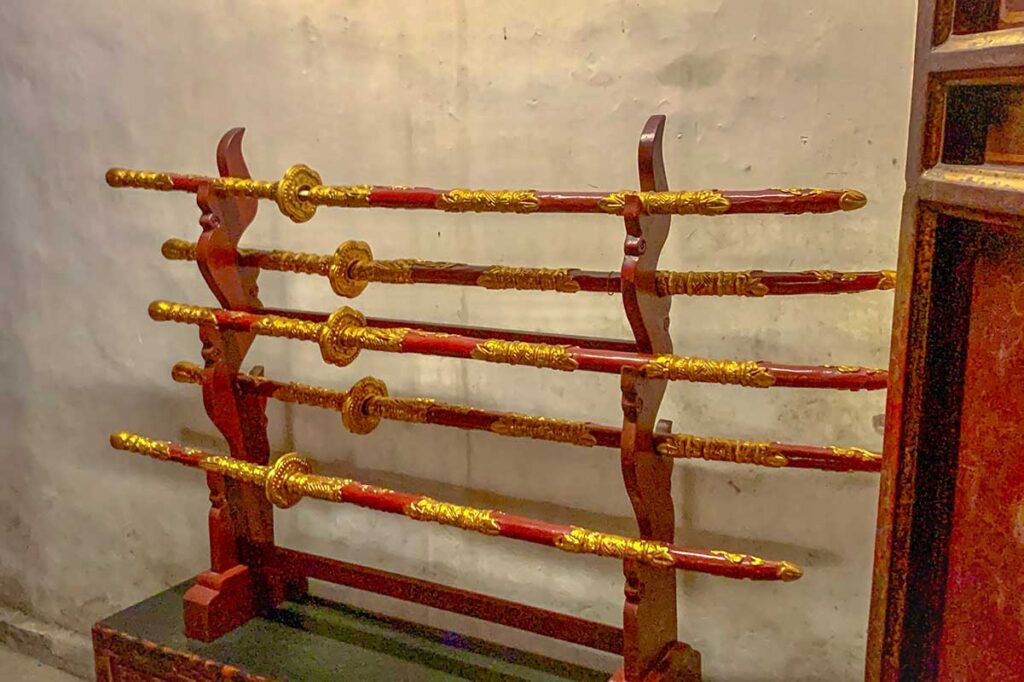
Inside, you’ll find an altar and ceremonial swords, representing the king’s strength and leadership. The temple plays a central role in the annual Co Loa Festival and remains an active place of worship tied closely to national legend.
Area 2: Outer Village Sites
To reach the second group of landmarks, follow the road through the village. It’s a quiet and pleasant walk, passing fish ponds, gardens, and local houses.
5. Ngu Trieu Di Quy Temple
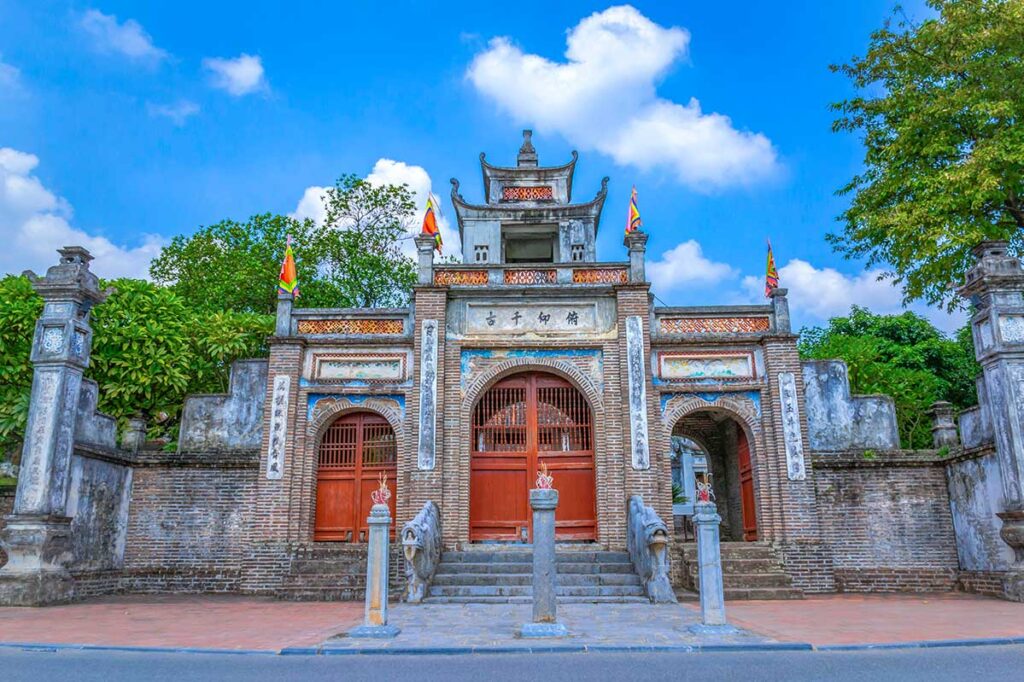
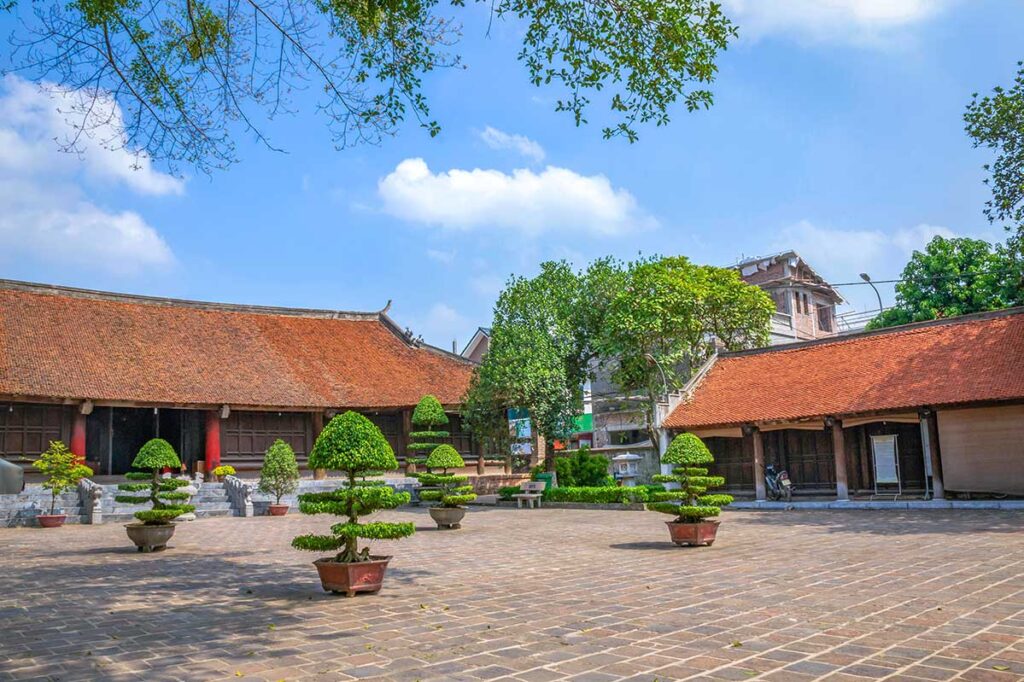
This communal house serves as a spiritual and social gathering place for the village. It honors the five loyal mandarins who served King An Duong Vuong and is used heavily during festival days. The structure follows classic northern Vietnamese đình architecture, with an open courtyard and wooden pillars.
6. My Chau Shrine (Am My Chau)
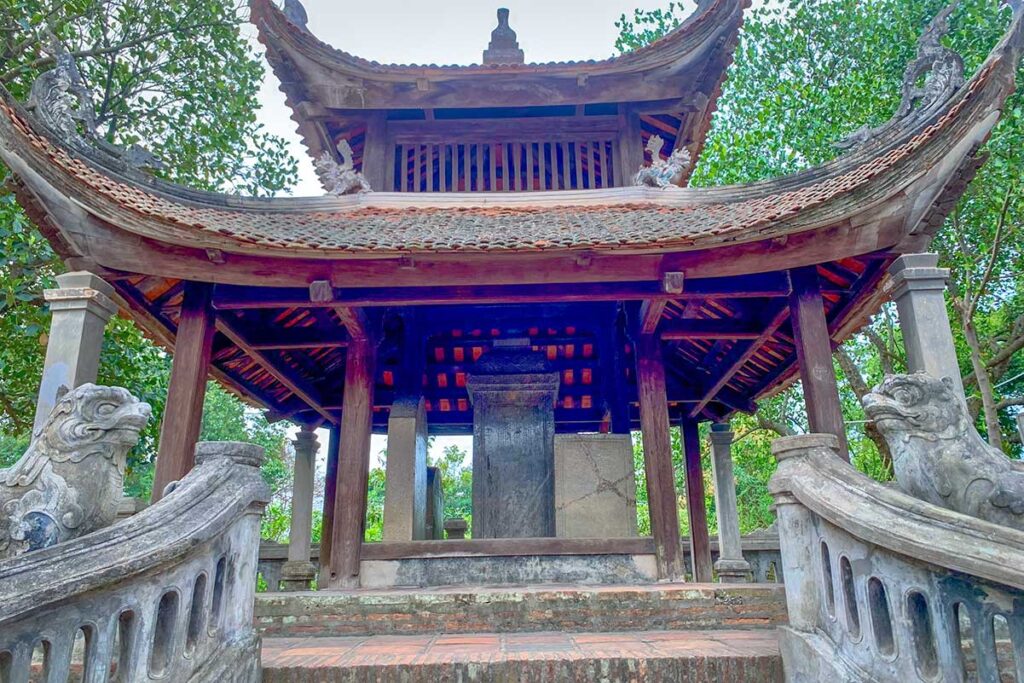
A small shrine dedicated to Princess My Chau, whose love and betrayal led to the fall of Co Loa. Inside stands a stone stele, which commemorates her tragic role in Vietnamese legend. Though modest, the shrine holds emotional weight for many Vietnamese visitors.
7. Bao Son Pagoda (Chùa Bảo Sơn)
Located nearby, this is a working village pagoda with a peaceful atmosphere. It features typical Buddhist design and serves the local community. While not a major tourist site, it offers a quiet place for reflection.
Other notable features
8. Old Houses & Village Scenery
Walking between the two main areas, you’ll pass traditional northern Vietnamese homes, ponds, and small gardens. These quiet lanes are great for slow travel and give you a glimpse into life in a village that’s been inhabited for thousands of years.
Smaller shrines in the area
Several smaller temples and shrines are scattered throughout the area, including:
- Mach Trang Temple
- Xuan Canh Temple
- Xom Chua and Xom Cho Pagodas
- Cau Ca Temple and Thu Cuu Temple
These sites are not essential for most visitors but can be interesting for those curious about folk religion or wanting to explore further. Most are used by local residents and may be closed outside of festival days.
Co Loa Museum
Located near the main entrance, the Co Loa Museum offers a compact but valuable overview of the site’s history and archaeology. It’s a good starting or ending point for your visit, especially if you want to better understand what once stood here.
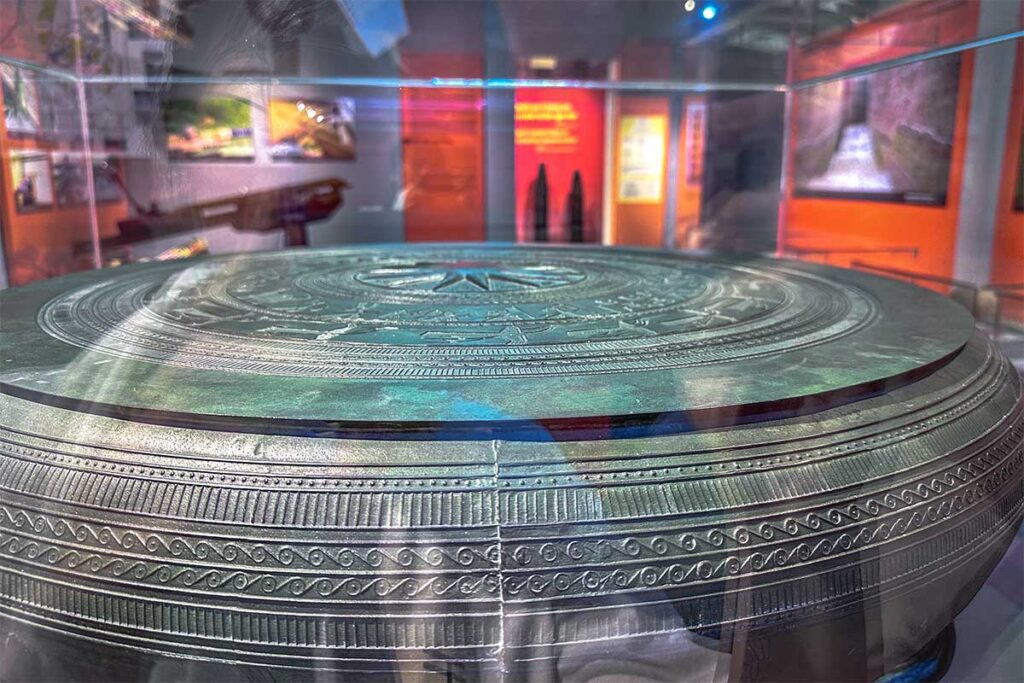
Inside, you’ll find a mix of ancient artifacts and modern reconstructions. The centerpiece is a large Đông Sơn bronze drum, weighing over 70 kilograms and discovered during excavations at the citadel. There are also tools, weapons, and stone molds used to cast bronze arrowheads—officially recognized as national treasures. These relics support the theory that Co Loa had centralized weapon production during the Âu Lạc period.
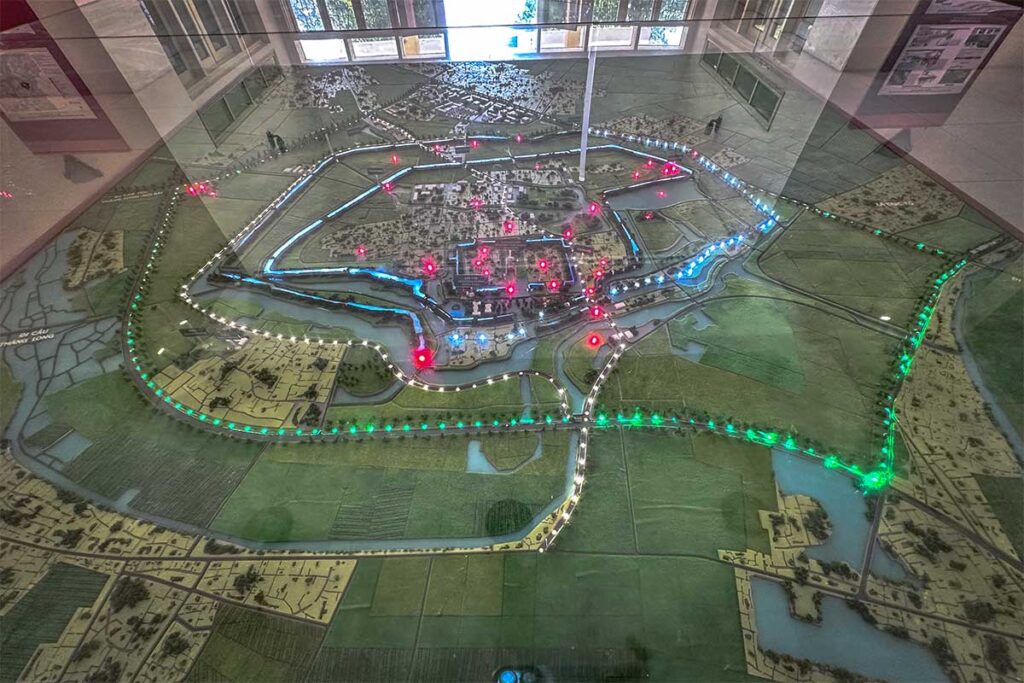
A scale model of the ancient citadel shows the spiral-shaped layout and multi-layered walls, with light projections to help visualize the outer, middle, and inner zones.
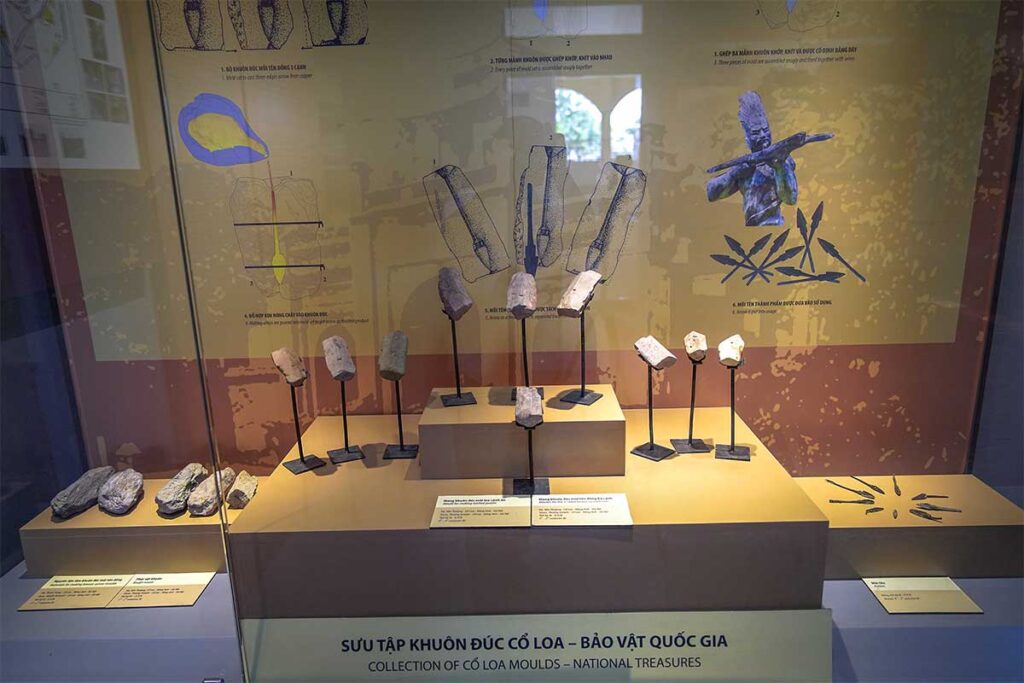
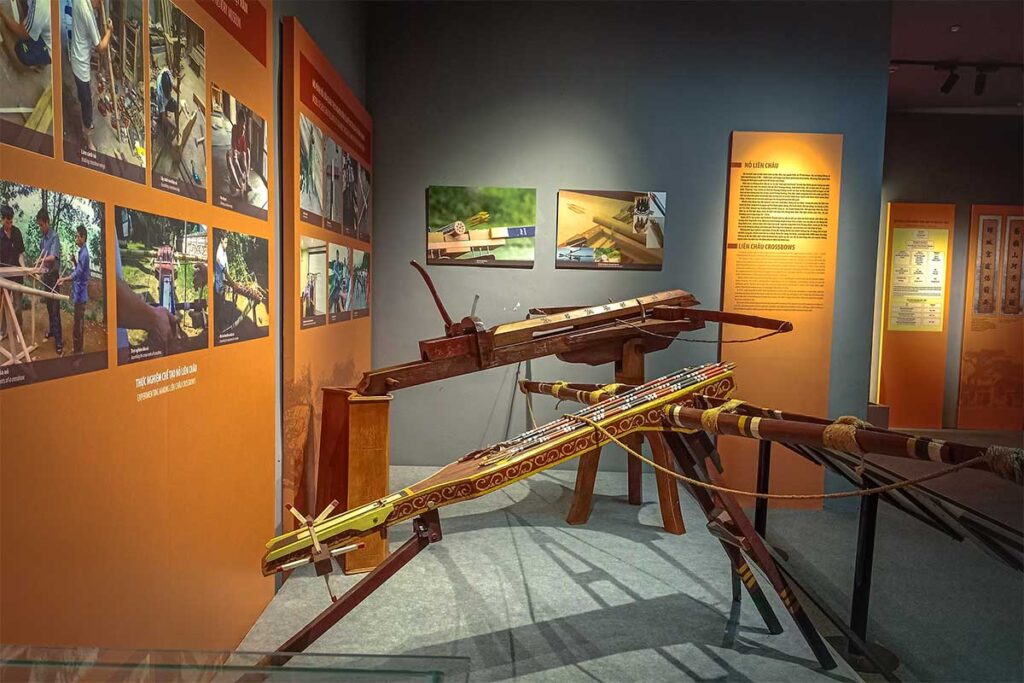
Other displays include replica crossbows (likely modern interpretations of the legendary weapon), decorated stone fragments, ceramic pots, and a few baskets that appear to be illustrative rather than historic.
Most labels are in Vietnamese and English, and the museum is small, but the collection helps bring the site’s scale and significance into focus—especially if you’re interested in archaeology or early Vietnamese civilization.
Co Loa Festival
The Co Loa Festival takes place every year around late January or February, usually on the sixth day after the Lunar New Year (Tết). It begins with a colorful procession from nearby villages to the main temple of King An Duong Vuong, followed by ceremonial offerings and traditional performances. Activities include crossbow shooting contests (inspired by legend), folk singing, water puppetry, wrestling, and other rural games.
The atmosphere is lively and deeply rooted in tradition, offering a rare chance to see local cultural practices in an authentic setting.
Visitor information
Opening Times
Co Loa Citadel is open daily from 8:00 AM to 5:00 PM, including weekends and holidays.
Entrance Fees
- Adults: 30,000 VND
- Children under 15: Free
- Tickets can be bought at the main entrance near the inner citadel.
Location & Address
Co Loa Citadel is located in Dong Anh District, about 17 km north of Hanoi’s Old Quarter.
Address: Cổ Loa, Đông Anh, Hà Nội, Vietnam
How to get there
The easiest and most comfortable way for foreign visitors to reach Co Loa is by Grab car or taxi, which takes around 30–45 minutes from central Hanoi, depending on traffic.
- Estimated one-way cost: 200,000–300,000 VND
- Tip: Ask your driver to wait and take you back, as it can be hard to find a return ride from the area. You can agree on a round-trip fare.
Tips for visiting Co Loa
Co Loa is peaceful and low-key, but visiting it without preparation can feel underwhelming—especially if you’re expecting a dramatic ancient ruin. These tips will help make your trip more enjoyable and meaningful.
Dress modestly
There’s no strict dress code, but it’s best to wear modest clothing—especially when entering temples and shrines.
Bring cash
The entrance fee is low, but there’s no card payment option and very limited access to ATMs in the area.
Read before you go
The citadel has minimal signage and few explanations in English. Knowing the stories—like the legend of the golden turtle and the magic crossbow—will make the experience much more engaging.
Combine it with the Vietnam Military History Museum
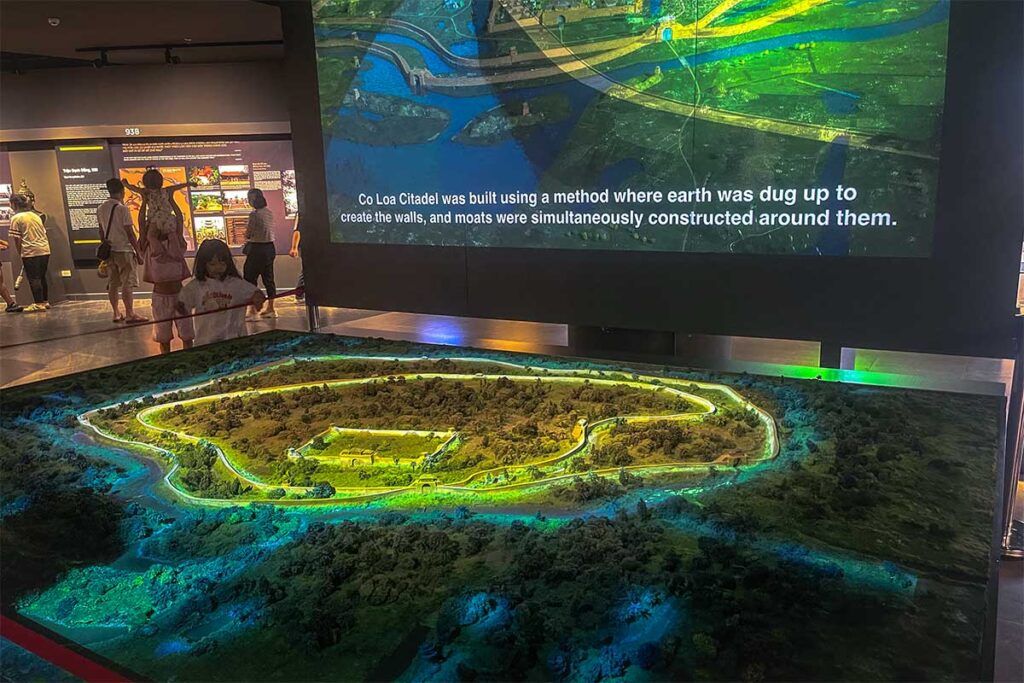
If you want deeper context before or after your visit, stop by the Vietnam Military History Museum in Hanoi. It includes a scale model of Co Loa Citadel and explains its historical role through artifacts and visual displays—often clearer than what you’ll find at the site itself.
Add a few stops along the way
There aren’t other major attractions near Co Loa itself, but if you’re driving from Hanoi’s Old Quarter, there are a few worthwhile places you pass by—or can easily detour to:
- Tran Quoc Pagoda – A scenic lakeside pagoda on West Lake, good for a peaceful stroll.
- West Lake – Hanoi’s largest lake, with cafes and viewpoints along the shoreline.
- Quang Ba Flower Market – Best visited very early in the morning, but it’s along the way if timing works out.
- Hanoi Rainbow Slide – A weird but fun detour that’s currently popular on social media; a lighthearted stop if you’re in the mood.
Is Co Loa Citadel worth visiting?
Co Loa Citadel is not one of Hanoi’s top highlights, especially if it’s your first time in the city. It’s a bit far from the Old Quarter and doesn’t offer the kind of visual impact you might expect from a historic fortress—much of it is low, earthen walls and scattered temples.
However, it can be worthwhile if you fall into one of these categories:
- You’re a history enthusiast curious about Vietnam’s earliest capital
- You’ve already seen Hanoi’s main attractions and want something different
- You enjoy quiet, non-touristy places off the usual tourist route
- You’ve read up on its background and want to see the landscape behind the legend
If you go unprepared, it may feel underwhelming. But with a bit of context—and the right expectations—Co Loa offers a peaceful and culturally rich glimpse into Vietnam’s ancient past.
